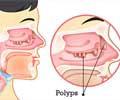A study claims that a new minimal invasion sinus surgery is gaining popularity rapidly.
A study claims that a new minimal invasion sinus surgery is gaining popularity rapidly. This surgery exposes patients to “very low” and safe doses of radiation during the procedure. The study was published in the issue of the journal Otolaryngology – Head and Neck Surgery
The study’s authors monitored 93 cases of balloon catheter sinus ostial dilation fluoroscopy performed over a ten-month period, using dosimeters to record radiation exposure to both the patient and the surgeon. The authors determined that the average dose of radiation received by a patient (0.32 mSv per sinus and 1.02 mSv over the eye) and the average total time of the procedure (just over three-and-a-half minutes) were enough to qualify as “very low” levels of exposure. (By comparison, the amount of natural background radiation you receive each year is between 2 and 4 mSv.)Similarly, the surgeon’s exposure to radiation was also determined to be “very low.”
Balloon catheter-based technology, previously used in a wide array of medical disciplines, including balloon angioplasty for clogged arteries, has recently emerged as a way to help sinus drainage. The procedure typically uses fluoroscopy to help the surgeon visualize the targeted sinus passage while they thread a guide wire equipped with a tiny balloon in to the nostril. The balloon is then inflated about a quarter of an inch – just enough to open the passageway and relieve chronic congestion in patients.
Over the past two decades, fluoroscopy has become most common form of radiographic visualization used during balloon catheter procedures, with nearly 700,000 fluroscopies performed each year; it is estimated that nearly 5 percent of the United States population undergoes a fluoroscopy each year.
Source-Eurekalert
KAV/L











